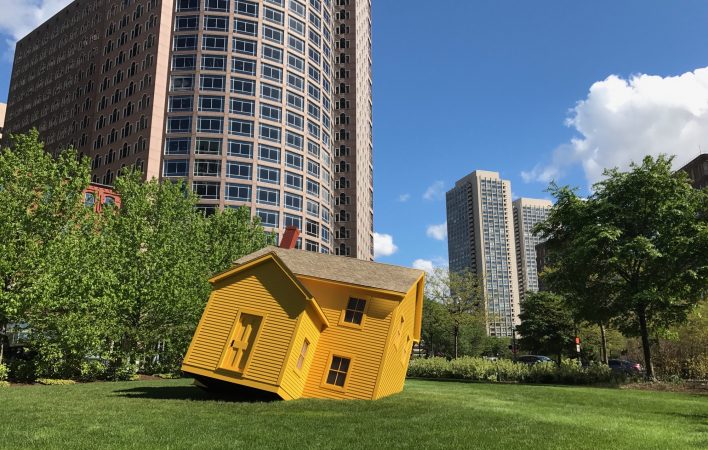

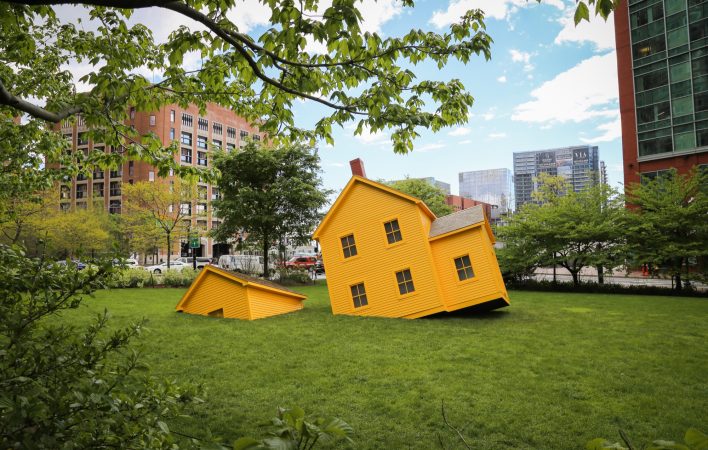
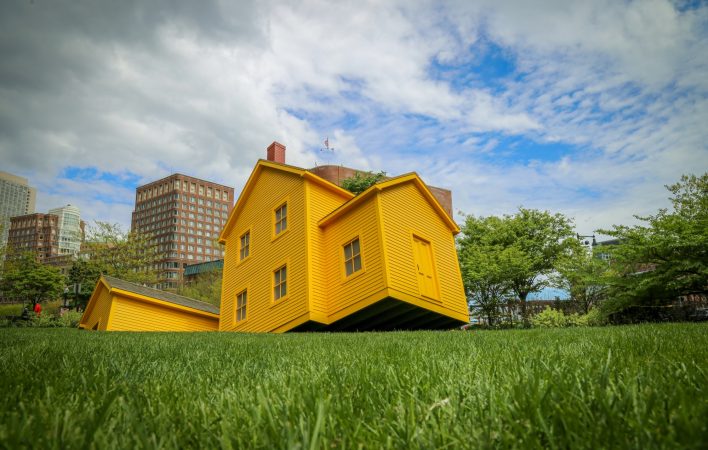
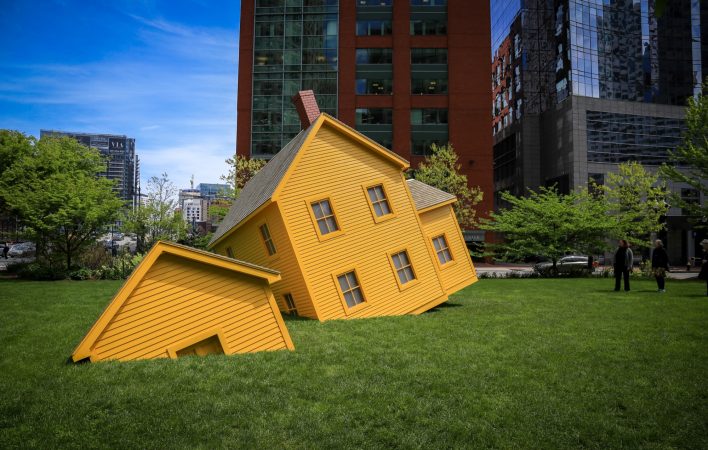
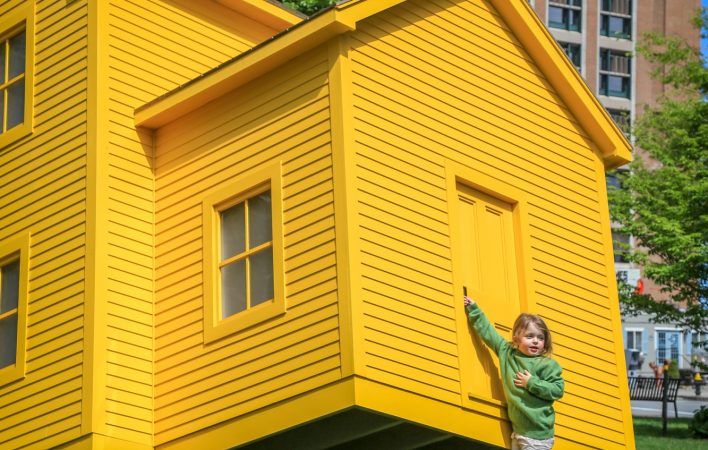
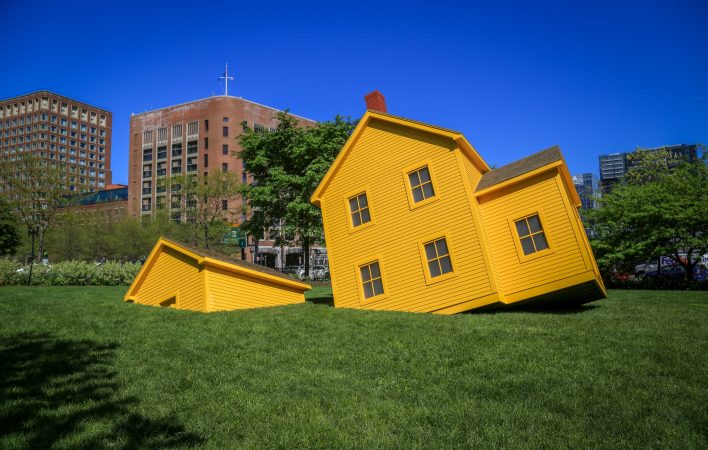
Artist Statement
The Meeting House takes inspiration from the simple architecture of the area’s first colonial settlers and was fabricated using traditional materials and techniques. The precariously-positioned New England Quaker-style structure that sinks into the lawn encourages visitors to explore the area’s built environment, consider the layers of history that make up Boston’s unique landscape, and challenge notions of community.
The sculpture references two significant parts of New England history: the small house-like structure is a reminder of the thousands of displaced residents and demolished homes that resulted from the city’s elevated highway infrastructure project, and the larger house is inspired by the Pembroke Friends Meeting House, which is the oldest surviving Quaker meetinghouse in Massachusetts. Traditional meeting houses became the community centers and had the defining characteristics of simplicity, equality, peace, and togetherness. They were places where community members openly discussed local issues, conducted religious worship, and engaged in town business. The Meeting House intends to mimic these ideals, highlighting the potential for civic structures to act as gathering points where passersby can explore, question and interact, and acting as a reminder of the essentialness of social interaction and civic discourse.
Materials: Eastern white cedar, birch plywood, galvanized metal, acrylic resin liquid coating, UV resistant Plexiglass acrylic, cast concrete, steel
About the Artist





